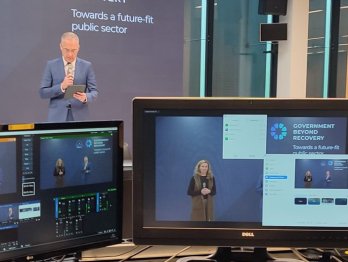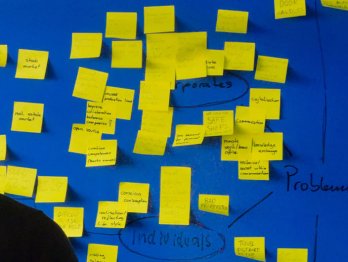COVID-19: Innovative responses update #6

This is our sixth update about innovative responses (including public sector innovation, digital government or open government) being undertaken around the world. Thank you again to all who have contributed in answer to our call and to our partners (including the Centre for Public Impact and GovInsider) for helping us to collect innovative practices. We hope that teams around the world can learn from each other and take inspiration from the information collected. There are now nearly 300 examples and initiatives in the collection, helping deepen our knowledge and understanding of how the public sector and its partners are responding to one of the most significant crises of recent times.
What can we observe from the additions made since our last update?
- Infection control or tracking measures: the Estonian government launched MASC, a digital solution for monitoring PPE stock and demand in hospitals and other public sector institutions (this initiative was a result of the Global Hack event) and is now used by over 300 institutions, including all hospitals, in Estonia. Meanwhile, Austrian social security funds are sharing anonymous data to support pandemic related scientific research while preserving patients’ privacy. In Denmark the Danish government is developing a COVID-19 infection tracing app based on the Google/Apple-solution and Bluetooth.
- Improving communications/providing targeted information: Romania created ‘Diaspora Hub’ to offer assistance to Romanians, associations and support groups abroad during the crisis, as well as a range of portals providing targeted information relating to different functions of government. Singapore is trialling the use of a robotic ‘dog’ to wander around a central park making announcements to encourage people to respect social distance requirements. Austria hosted a free digital conference to help businesses through information and exchange of experiences.
- Service delivery in a crisis/adjusting to context: in Romania government agencies have been adapting to telework, while Austria has dramatically expanded support for telework by public employees. Also in Austria the ‘Eduthek’ education central platform for learning has been launched offering teachers, pupils and their parents information and assistance materials. This is complemented by a separate distance learning portal for teachers, by the ‘Edutube’ educational platform which provides short videos and documentation as a supplement and support for digital teaching, and by the loaning of digital devices to pupils. This has been matched in the broader economy with support for distance learning for vocational apprentices and for those in the construction sector.
- Social solidarity and ‘caremongering’: in Romania the volunteer ‘Groceries at your door’ initiative provides free delivery of groceries and prescription medicines for people at high risk from the pandemic.
- Leveraging and redeploying existing resources and solutions: an initiative in Austria saw cooperation between hospital associations and relevant educational institutions and companies to expand production of protective masks and shields through 3D printing. This included the company Happylab starting a nationwide crowd-working process or “crowd-printing” process in the production of facial protection shields among its 2000 members. Elsewhere, the intellectual property agency IP Australia released a free package of global interactive patent data visulations on technologies important in the response to COVID-19.
- Open calls, hackathons and other challenge-mechanisms: Indonesia’s Ministry of State Apparatus and Bureaucratic Reform is holding competitions to recognise outstanding innovations and successes in public service provision responding to the pandemic.
- Structural responses and possible longer-term shifts: in Romania the Department of Sustainable Development is looking at the crisis as an opportunity for expanding engagement with the principles of sustainable development.
Reflections and new thinking
While collecting innovative responses, we are simultaneously keeping an eye on the long term, to countries’ proactive steps towards uncertain futures and to signals and analyses of how our assumptions about public sector governance may change.
This includes looking at how government could (or should) change at a systems level, such as Thea Snow’s Reimagining Government series, the reflections from the London Office of Technology and Innovation about what a good recovery looks like, or some thinking about what healthy learning systems look like in the public service. It’s also about looking through topic- and discipline-specific lenses – for instance, whether health and wellness measures could compete more strongly against GDP for attention post-COVID-19, or whether pro-social language could continue in our discourse post-crisis, part of a series exploring our collective economic future. Let us know if you see other relevant pieces.
Caveat
The innovative initiatives here are represented as best as we can, given the information available. Additionally, these examples are included as observations, with no judgement made about their merits. Innovative responses are, by definition, new, and it takes time to know whether new things work, and if they work, whether they are appropriate or wanted.
If you know of other examples, we want to hear from you
We need your help in continuing to add innovative initiatives to the coronavirus crisis to our tracker and in disseminating the call. This not only helps us to gather data to inform our research and support of governments, but it helps others to share ideas and replicable solutions with others around the world. All our work on this topic will feed into the broader work of the OECD in compiling data, information, analysis and recommendations regarding the health, economic, financial and societal challenges posed by the impact of Coronavirus (COVID-19). Please visit the dedicated page for a full suite of coronavirus-related information.









